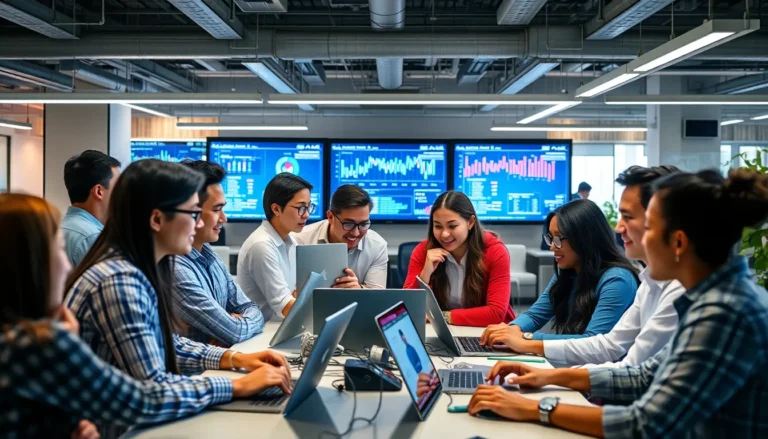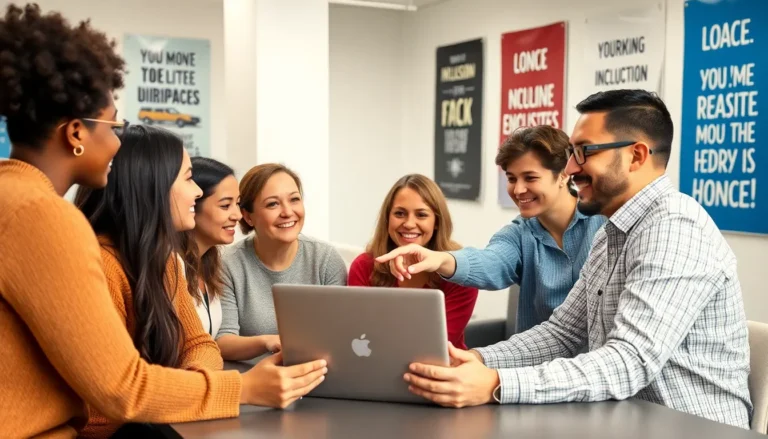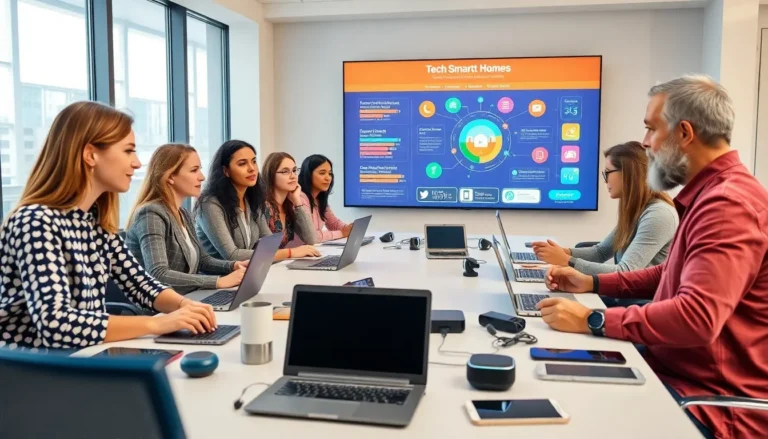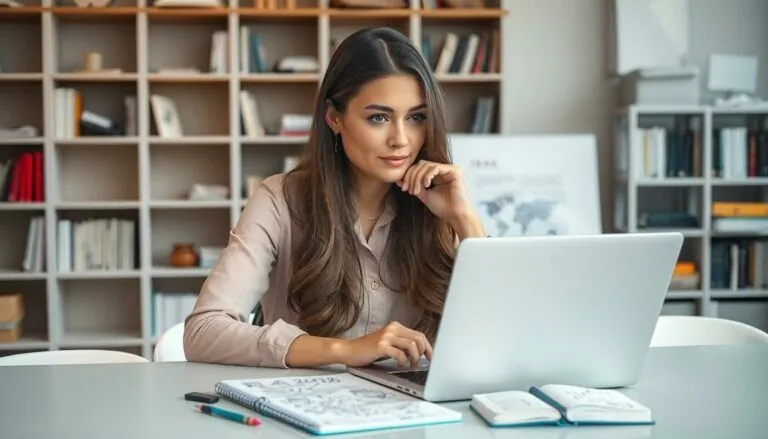Table of Contents
ToggleIn a world where words often take center stage, wouldn’t it be great if they could dance with images too? Enter ChatGPT, your trusty AI sidekick that’s not just all about text. Imagine crafting stunning visuals simply by chatting. It sounds like magic, but it’s all about harnessing the power of creativity and technology.
Understanding ChatGPT and Its Capabilities
ChatGPT serves as a powerful AI tool designed to facilitate creative expression. This technology supports users in generating images through conversational prompts, blending text and imagery seamlessly. Users input descriptive text, and the AI processes it to create a visual representation.
Various use cases highlight the versatility of ChatGPT. In fields like education, marketing, and art, it has become a resource for visual storytelling. Artists can visualize concepts quickly, while marketers create engaging content more efficiently. The interaction involves exploring ideas and refining them through dialogue, enhancing collaboration.
Creating images with ChatGPT relies on its advanced natural language processing abilities. This AI understands context and nuances in user queries, enabling it to generate relevant visuals. Its capacity to learn from a wide array of sources contributes to the quality and relevance of the images produced.
Collaboration is a key aspect of this technology. Users refine their prompts based on the initial output, leading to more tailored visuals. This iterative approach increases engagement and satisfaction.
Widespread accessibility of ChatGPT democratizes image creation. People without formal training in design can now express their ideas visually. The platform fosters creativity by breaking down barriers typically associated with graphic design.
Expect ongoing developments in this area. As the technology evolves, its image-generating capabilities will expand, allowing for even more sophisticated creations. Embracing tools like ChatGPT can enhance creative workflows and redefine visual communication in numerous industries.
Importance of Visual Content in Conversations
Visual content plays a crucial role in enhancing conversations. This aspect significantly impacts user engagement and communication effectiveness.
Enhancing Engagement
Visuals capture attention and spark interest. Users are more likely to interact with content that includes images, which encourage participation. Incorporating visuals improves retention, making the information more memorable. Studies indicate that articles with visual elements receive 94% more views compared to text-only formats. Utilizing visuals can foster a deeper connection with the audience, creating a more immersive experience. Engaging visuals promote sharing, increasing content reach in social settings. The ability to visually express ideas leads to richer discussions, enabling users to convey complex concepts more effectively.
Improving Communication
Visuals clarify information and help convey complex ideas. They simplify data interpretation, especially in intricate topics where words may fall short. When paired with text, images reinforce messaging, making it more accessible. For instance, charts and infographics enhance understanding by summarizing key details visually. Users often find collaborative dialogues more productive when visuals accompany their messages. Incorporating relevant visuals reduces miscommunication by providing context. The effectiveness of communication increases significantly through this approach, leading to better responses and fruitful exchanges. Leveraging visuals in conversations drives interaction and enhances overall communication quality.
Steps to Make Pictures in ChatGPT
Creating images in ChatGPT involves straightforward steps that enhance user experience. Engaging with text prompts and utilizing external tools can lead to high-quality visuals.
Utilizing Text Prompts
Crafting effective text prompts serves as a crucial first step. Prompts need to be specific to guide the AI toward desired images. For example, instead of a vague request like “draw a cat,” using “create an orange tabby cat sitting on a sunny windowsill” generates more accurate results. Adjusting the wording of prompts based on initial outputs can refine the generated images. Experimenting with different descriptors and instructions enriches the visual content. Users may also include context or emotion, such as asking for “a happy landscape at sunset,” creating engaging and vibrant representations.
Leveraging External Tools
Integrating external tools broadens the creative possibilities within ChatGPT. Various image-editing software provides additional capabilities, allowing users to modify generated visuals further. Applications like Canva or Adobe Spark enable users to enhance AI-created images with filters, text overlays, and more. This combination encourages a collaborative approach to image creation, where users can obtain custom results. Online platforms, such as DALL-E and Midjourney, provide alternative methods for generating visuals that can complement ChatGPT outputs. Combining these resources expands creative options and enhances the overall rendering of ideas into images.
Best Practices for Creating Effective Images
Creating impactful images in ChatGPT involves various considerations that enhance clarity and audience engagement.
Clarity and Relevance
Clear prompts yield relevant images. Use specific language and vivid descriptions to articulate desired visuals. Incorporating context helps ChatGPT understand the request better, leading to results that align with expectations. For instance, specifying colors, styles, and details can refine the output significantly. Vague prompts often produce generic images, hindering effectiveness. Strive for precision in requests, as this practice reduces ambiguity and enhances communication. Relevant visuals resonate with viewers and reinforce the intended message, ensuring a compelling connection between text and imagery.
Adapting to Your Audience
Understanding the target audience significantly impacts image effectiveness. Consider their preferences, interests, and cultural context when crafting prompts. Tailoring descriptions engages viewers directly and encourages positive responses. Using appropriate terminology that the audience can relate to fosters familiarity and relevance. Testing various prompts based on audience feedback can refine results further. When adapting visuals for different demographics, flexibility in approach leads to better outcomes. Engaging the audience through relatable content amplifies the impact of the visuals, creating memorable experiences.
Harnessing the power of ChatGPT to create images opens up a world of creative possibilities. Users can effortlessly blend text and visuals to enhance storytelling and communication. By crafting effective prompts and experimenting with various descriptors, anyone can produce stunning visuals that resonate with their audience.
The accessibility of this technology democratizes image creation, allowing individuals from all backgrounds to express their ideas visually. As advancements continue to emerge, the potential for innovation in visual communication only grows. Embracing these tools can lead to more engaging content and richer conversations, ultimately transforming the way ideas are shared and understood.







